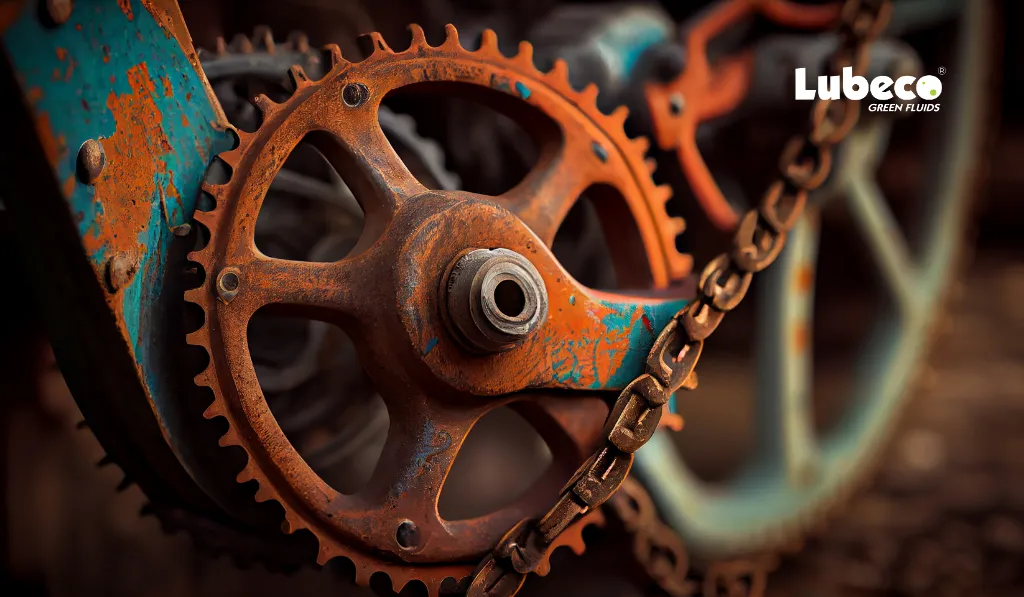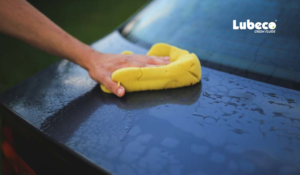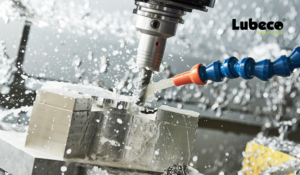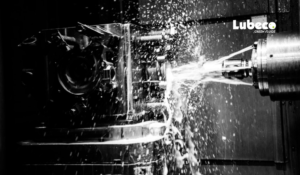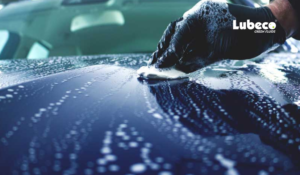Rust or corrosion is the deterioration of a metal over time due to the reactions of the metal surface with its surrounding environment. Rust can cause damage to metal structures and equipment in all industries. To prevent heavy costs, it is essential for all industries to prevent rust. Rust prevention is crucial to maintaining metal components’ integrity and longevity, particularly in industries where corrosion can have severe consequences. This blog explains the mechanisms of rust prevention, focusing on three primary methods: barrier, passivation, and vapour inhibitors.
Barrier Method
The barrier method creates a physical barrier between the metal surface and its environment. This restricts the metal’s surface’s exposure to the elements that cause rust—namely, oxygen and water. This method is one of the simplest and most widely used rust prevention techniques.
Process
The barrier method involves applying a protective coating or layer to the metal surface. The coating can be paint, varnish, or wax. It prevents moisture and oxygen from reacting with the metal. The coating can also be in the form of a lubricant, such as oil or grease, which fills the microscopic crevices and pores on the metal surface, preventing moisture from penetrating the surface and reacting with the metal to form rust.
Types
- Paints and Coatings: These are the most common form of barrier protection. They can be applied to the metal surface by spraying, brushing, or dipping.
- Plating: This involves coating the metal with another metal, like zinc, chromium or nickel, that is more resistant to rust.
- Enamel and Powder Coating: Enamel and powder coatings are baked onto the metal surface, providing a hard, durable finish that prevents the metal’s chemical reactions with its environment.
- Grease and Oils: Grease and oils are used to fill the microscopic crevices and pores on the metal surface, preventing moisture from penetrating the surface and reacting with the metal to form rust.
Applications
- Aerospace: To protect aircraft and spacecraft from corrosion.
- Automotive: To protect car parts, such as engine components and body panels, from corrosion.
- Construction: To protect construction equipment and materials from corrosion.
- Industrial: To protect industrial equipment and machinery from corrosion.
Benefits
- Corrosion Prevention: Barrier protection prevents corrosion by creating a physical barrier between the metal surface and the elements that cause rust.
- Long-Term Protection: Barrier protection provides long-term protection against corrosion, as the coating or layer can last for many years.
- Easy Maintenance: This process is easy to maintain, as the coating or layer can be easily cleaned and reapplied whenever required.
Limitations
- Coating Failure: The coating or layer deteriorates over time which exposes the metal to corrosion.
- Environmental Factors: Temperature and humidity affect the effectiveness of barrier protection.
- Cost: Barrier protection can be very expensive, especially for large-scale applications.
Passivation
Passivation is a rust prevention method that relies on forming a passive oxide layer on a metal’s surface. This layer prevents corrosion by eliminating contaminants, such as iron or other impurities, and enhances the metal’s natural corrosion resistance.
Process
The passivation process comprises cleaning the metal surface to remove contaminants, such as dirt, grease, or scale, and then treating the surface with a chemical solution, such as nitric acid or citric acid, to remove free iron and other surface impurities. This increases the metal’s natural corrosion resistance by increasing the ratio of stable chromium atoms to the more reactive iron atoms in the top three to five atomic layers of the metal’s surface.
Types
- Nitric Acid Passivation: Nitric acid passivation is the most common type of passivation. It involves treating the metal surface with a nitric acid solution to remove free iron and other surface impurities.
- Citric Acid Passivation: Citric acid passivation is used to passivate metals that are sensitive to nitric acids, such as titanium and aluminium.
- Electrochemical Passivation: Electrochemical passivation involves treating the metal surface with an electric current to enhance the corrosion resistance of the metal.
Applications
Passivation is mainly used in industries where stainless steel is common, such as medical devices, food processing equipment, and aerospace components. The treatment ensures these critical items remain rust-free and maintain their functionality.
Benefits
The main benefit of passivation is that it strengthens the natural corrosion resistance of metals, especially those already designed to be resistant, like stainless steel. This process helps maintain the metal’s appearance and structural integrity over time.
Limitations
Despite its effectiveness, passivation is not suitable for all types of metals. It is primarily used for stainless steel and other alloys that can form a stable oxide layer. The process also requires careful handling of hazardous chemicals and adherence to strict safety protocols.
Vapor Inhibitors
Vapor corrosion inhibitors (VCIs) are a modern and innovative approach to rust prevention. These compounds release protective molecules into the air that settle on metal surfaces and form a thin, invisible layer to prevent rust.
Process
VCIs work by sublimation, where the solid or liquid inhibitor transforms into vapor. These vapor molecules travel through the air and settle onto the metal surface, that creates a molecular barrier against moisture and oxygen. This barrier is often self-healing and can re-establish itself if disturbed.
Types
VCIs come in the form of powders, sprays, diffusers, and impregnated materials such as paper or foam. This variety allows VCIs to be used in different environments, from storage and shipping to active operation.
Applications
VCIs are mostly used in places where traditional barrier methods cannot be used. For example, they are used to protect machinery during shipping, parts stored in warehouses, and even in enclosed spaces like electrical panels. They are also beneficial for protecting metals in hard-to-reach spaces in complex structures.
Advantages
The main advantage of VCIs is that they do not need to be applied to metal surfaces directly. This makes them ideal for protecting intricate machinery and equipment where applying a coating is difficult. VCIs are also less messy and require less maintenance compared to other methods.
Limitations
They are less effective in open environments where the vapor dissipates quickly. Their effectiveness depends on specific metals and environmental conditions. VCI chemicals can also have a negative impact on human health and environmental safety.
Conclusion
Rust prevention is crucial to maintaining the longevity and strength of metal structures and equipment. Each method—barrier protection, passivation, and vapor inhibitors—has its own strengths and limitations. In practice, a combination of these methods is employed to ensure a robust protection against rust. Understanding the mechanisms behind each approach allows for informed decisions and optimized rust prevention strategies tailored to specific needs and environments.

